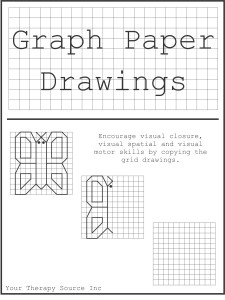SNARC Effect and Motor Responses

Have you ever heard of the SNARC effect? I had not, so when I read about it in a research article I decided to find out more information. SNARC stands for spatial-numerical association of response codes. The SNARC effect is when someone is presented with smaller numbers people respond faster with the left hand and when presented with larger numbers people respond faster with the right. This results in an mental representation of a number line. Some research indicates that the SNARC effect is present in children as young as 5.8 years old. Preschool children are developing the SNARC effect.
In one study, 4 year olds participated in a spatial search task with a box that had seven compartments labeled with the numerals 1 to 7. For half of the children the numbers increased from left to right, and for the other half the numbers increased from right to left. The results showed that children were faster and more accurate in the left-to-right search condition. In a second experiment, the researchers asked preschool children (3–5 years of age) to count a given linear set of objects. The results indicated that already 73% of the preschoolers started counting at the leftmost object and proceeded to the rightmost object.
Another study involving 4-year-olds discovered that the children were faster when choosing the display containing less elements when it was presented on the left side of the screen and more elements when presented on the right side of the screen.
Additional research (Crollen, 2015) indicates that children with non verbal learning disabilities (NVLD) do not display the SNARC effect. NVLD seems to affect the accuracy and the nature of the mental number line by decreasing the saliency of its left-to-right orientation.
Another study (Lindemann, 2007), revealed a close link between numerical cognition and motor control. The researchers discovered that precision grip actions were initiated faster in response to relatively small numbers, whereas power grip actions were initiated faster in response to large numbers. Interestingly, numerical magnitudes did not affect the actions if they involved no grasping component and consisted only of a reaching movement (i.e., pointing response) toward the smaller or larger (respective upper or lower) part of the object. Therefore, reaction time effects remained present when controlling for the number of fingers used while grasping but disappeared when participants pointed to the object.
Do you take numerical magnitude into consideration when working on visual spatial tasks with children? If you do, does it improve the child’s accuracy?
I would be very interested in seeing additional research on this topic especially with the children that receive school based therapy services, exhibit visual perceptual deficits or any children with motor planning deficits.
References:
Crollen, V. et.al Spatial and numerical processing in children with non-verbal learning disabilities. Research in Developmental Disabilities. Volume 47, December 2015, Pages 61–72
Hoffmann, D et al. Developing number–space associations: SNARC effects using a color discrimination task in 5-year-olds. Journal of Experimental Child Psychology
Volume 116, Issue 4, December 2013, Pages 775–791
Lindemann, O et al. Getting a grip on numbers: numerical magnitude priming in object grasping. J Exp Psychol Hum Percept Perform 2007 Dec;33(6):1400-9
Graph Paper Drawings
By: Your Therapy Source, Inc
Summary: Download of 40 pages of graph paper drawings to copy and 5 blank grids to create you own drawings. Find out more at https://www.yourtherapysource.com/graphdraw.html




Comments are closed.